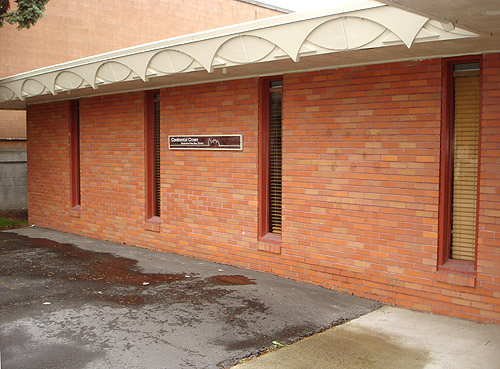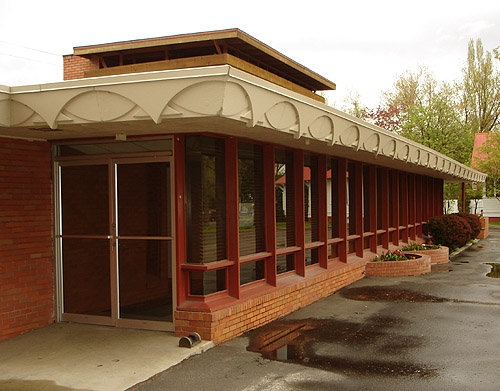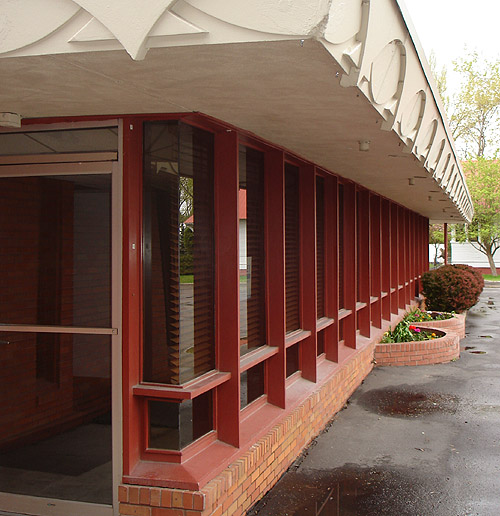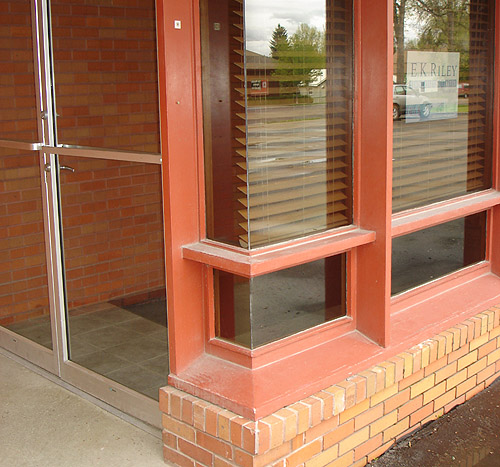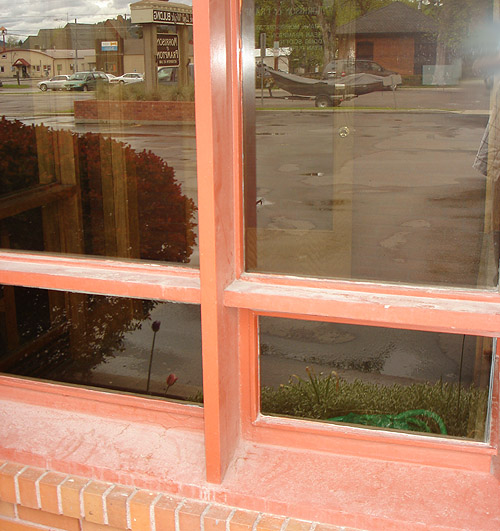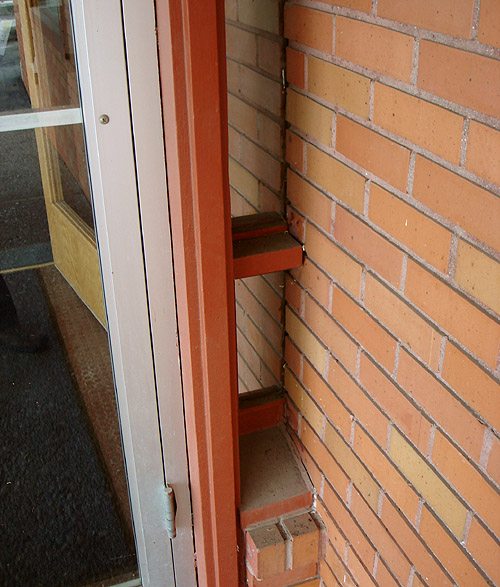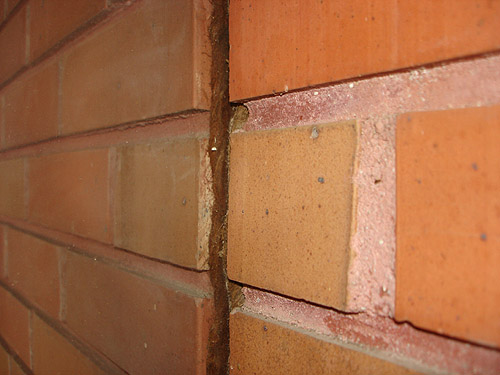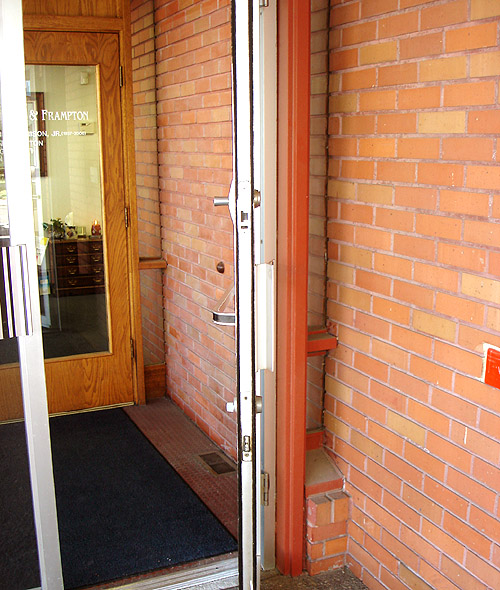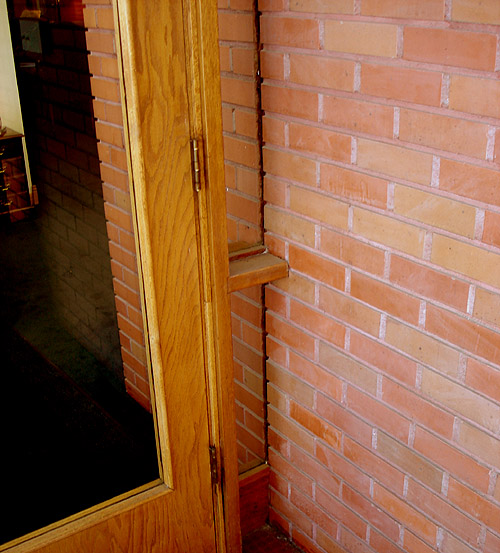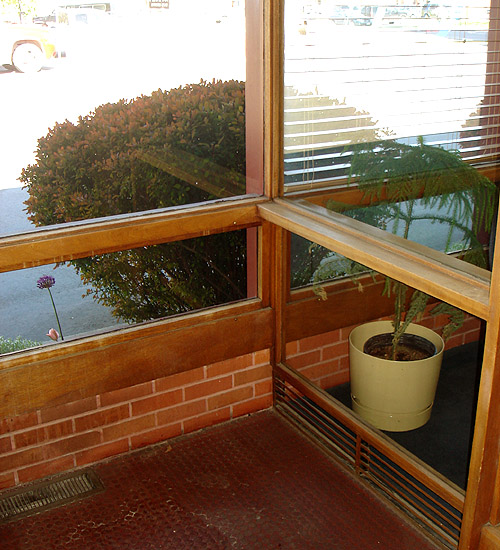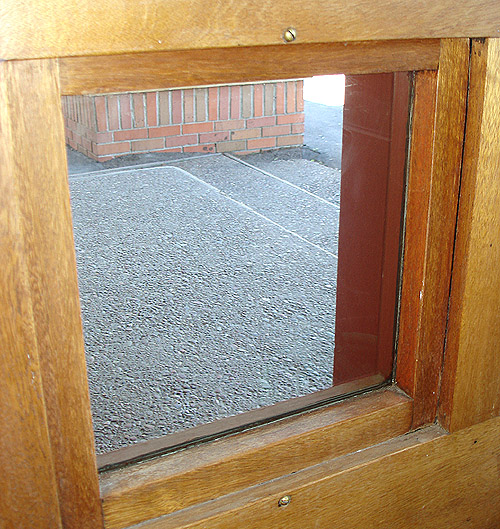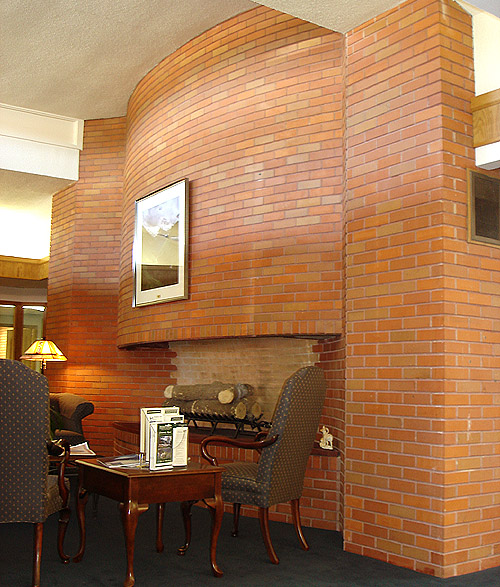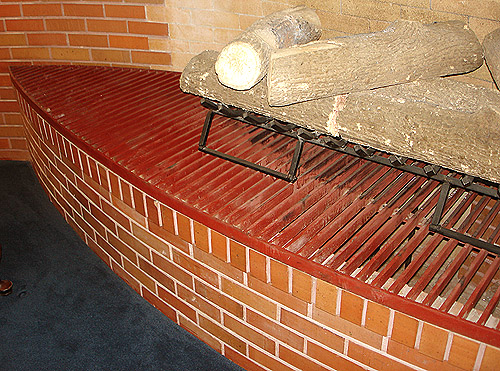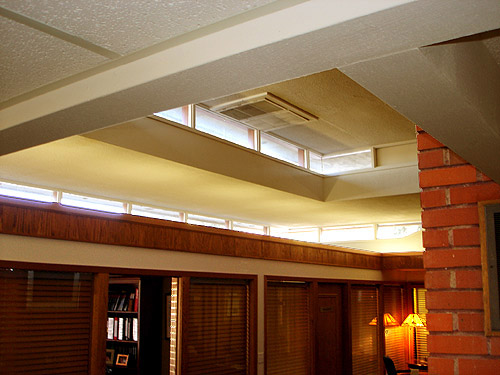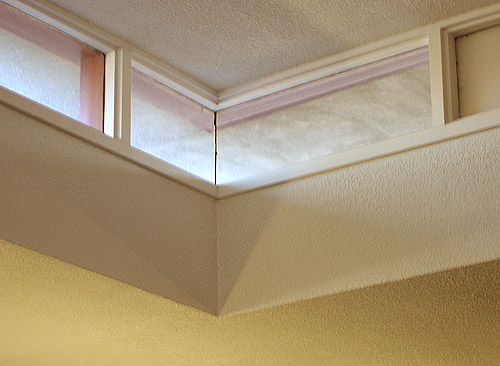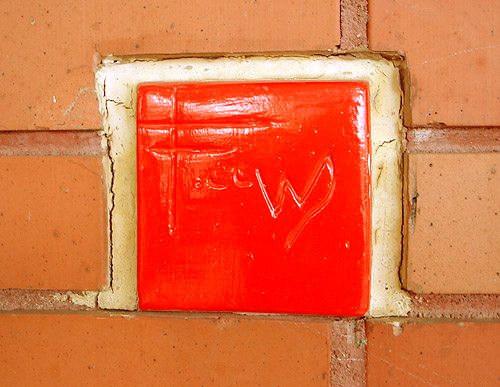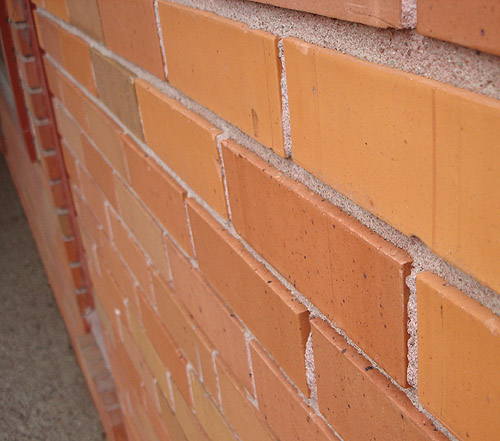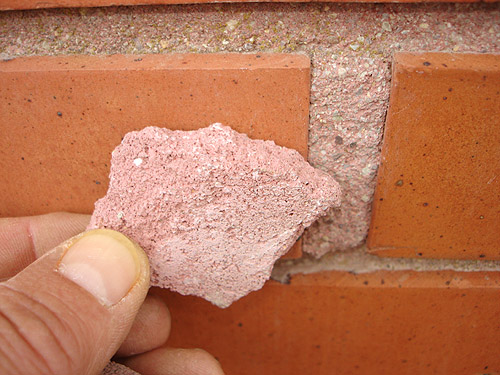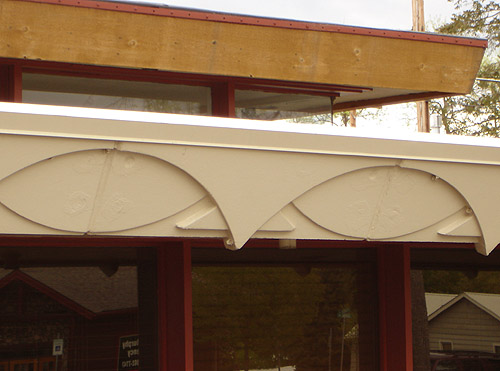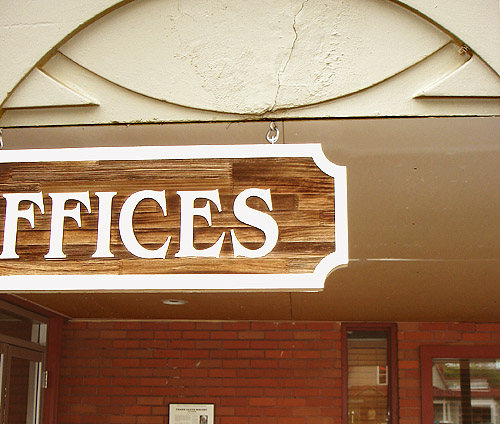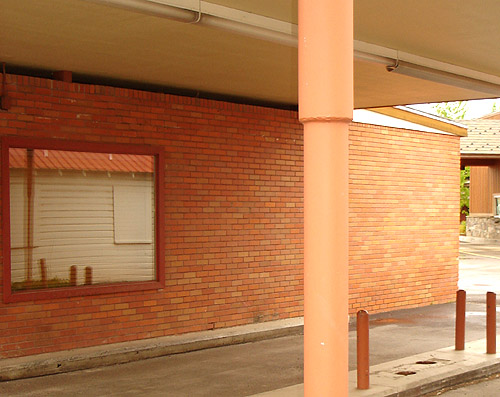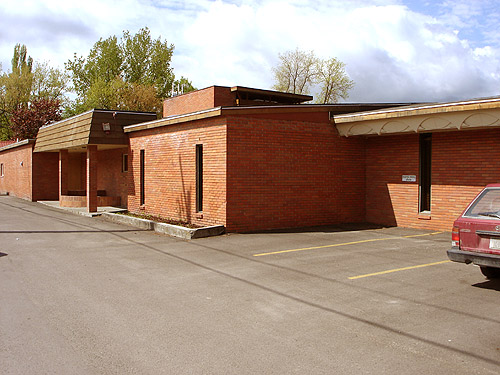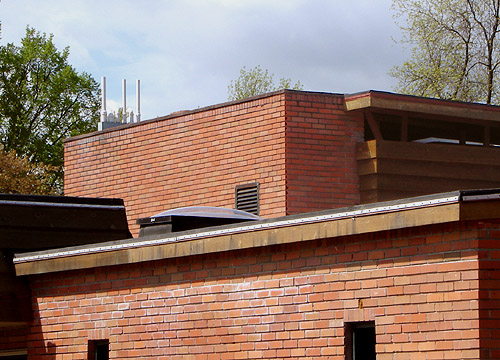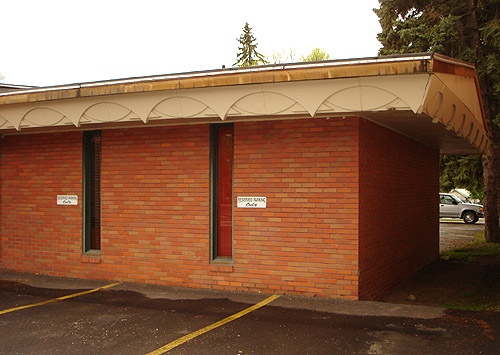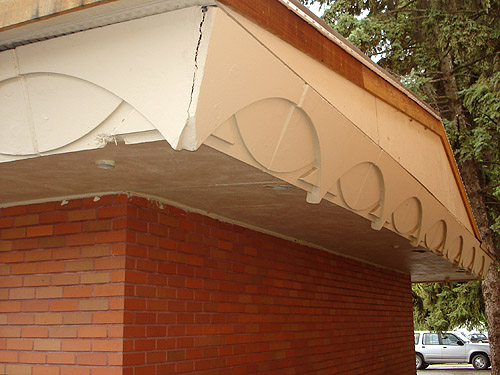Lockridge Medical Clinic, Whitefish, Montana (1958) (S.425)
Photographs By Douglas Steiner, May 2008
There are many classic Wright details. Mitered glass corners, which appear on the two outside corners of the waiting room as-well-as the clerestory windows. The six inch vertical glass windows just to the right of the exterior and interior front doors, are imbedded in the brick on the right side. These are reminiscent of many Wright buildings. The classic horizontal feel with the vertical windows. Floor to ceiling windows. Decorative cast concrete fascia. The mortar is raked about one-quarter of an inch on the horizontal joints, and flush on the vertical joints. The mortar is tinted pink, almost light purple, consistent with rocks that are native to the area. The interior has suffered extensive remodeling over the past forty five years. Little remains of Wright’s design, but what has remained is classic. The massive brick fireplace is stunning. The double clerestory windows with mitered glass corners opens up what is left of the waiting room. 1: The classic horizontal feel with the vertical windows remain. Floor to ceiling windows. Decorative cast concrete fascia.
2: Front side, north end. This end remains as designed, the classic horizontal feel with vertical windows. 3: Detail of one of the vertical windows. 4: The upper parapet which as designed for flowers has been capped. The round twenty four foot semi-circular planter was replaced by two smaller semi-circular planters. The white plastic orb was removed.
5: A second front door on this north side of the waiting room was added.
6: Mitered glass corners, appear on the two outside corners of the waiting room. The classic horizontal feel with the vertical floor to ceiling windows.
7: Detail of the mitered glass corners. 8: Verticals are set on four foot centers.
9: Mitered glass corners, appear on the two outside corners of the waiting room. The classic horizontal feel with the vertical floor to ceiling windows.
10: Detail of the mitered glass corners.
11: Floor to ceiling front door was replaced.
12: Six inch wide vertical glass windows just to the right of the front door, are imbedded in the brick on the right side.
13: Detail of the glass windows imbedded in the brick on the right side.
14: Six inch wide vertical glass windows are repeated on the second set of double doors in the vestibule, and are imbedded in the brick on the right side.
15: Detail of the glass windows imbedded in the brick on the right side.
16: Detail of the interior mitered glass corner in the vestibule.
17: Detail of the vestibule.
18: Detail of the mahogany trim.
19: Detail of the mahogany trim. Notice the screws holding the trim in place.
20: The massive brick fireplace is stunning.
21: Detail of the fireplace grate.
22: The double clerestory windows have mitered glass corners.
23: Detail of the clerestory windows. 24: Interior brickwork clearly shows the raked horizontal joints and tinted mortar.
25: The red tile appears in the photographs from the late 1960s.
26: Historic plaque added by the Stumptown Historical Society and the Whitefish Community Foundation.
27: The mortar is raked one-quarter of an inch on the horizontal joints, and flush on the vertical joints. 28: The mortar is tinted pink, almost light purple, consistent with rock that is native to the area. The interior mortar has been spared the elements and seems to be a darker reddish purple.
29: Decorative cast concrete fascia.
30: Decorative cast concrete fascia. 31: Clerestory windows repeat glass corners. 32: The entrance today. The right side of the roof was extended twelve feet or three sections. It originally was the same length as the north side. An additional large window was added on the right side. The square planter was added as-well-as the corner post support. The long horizontal front stairs that originally extended toward the center of the building to the round semi-circular planter were removed. The round semi-circular planter was replaced by two smaller semi-circular planters.
33: The stress fracture indicates where the original fascia ended.
34: Detail of the stress fracture. 35: The bank added a drive-in window and carport roof, as well as the post supports. 36: The back of the building shows an addition that was added to the center of the building.
37: The length of the fireplace chimney is seen from the back of the building.
38: Back side, north end. This end of the building remains as designed, but the roof line has been altered. A pitched roof was added, I suspect to deal with any leakage problems. This precipitated the addition of the strip of wood capping the decorative cast concrete fascia. 39: North end. Detail of the altered roof line as well as the damage to the decorative cast concrete corner. Text and Photographs by Douglas M. Steiner, Copyright 2008 BACK HOME ARTIFACTS AUDIO BOOKS PERIODICALS PHOTOS POSTCARDS POSTERS STAMPS STUDIES ASSISTING COLLECTING
©Copyright 2008

